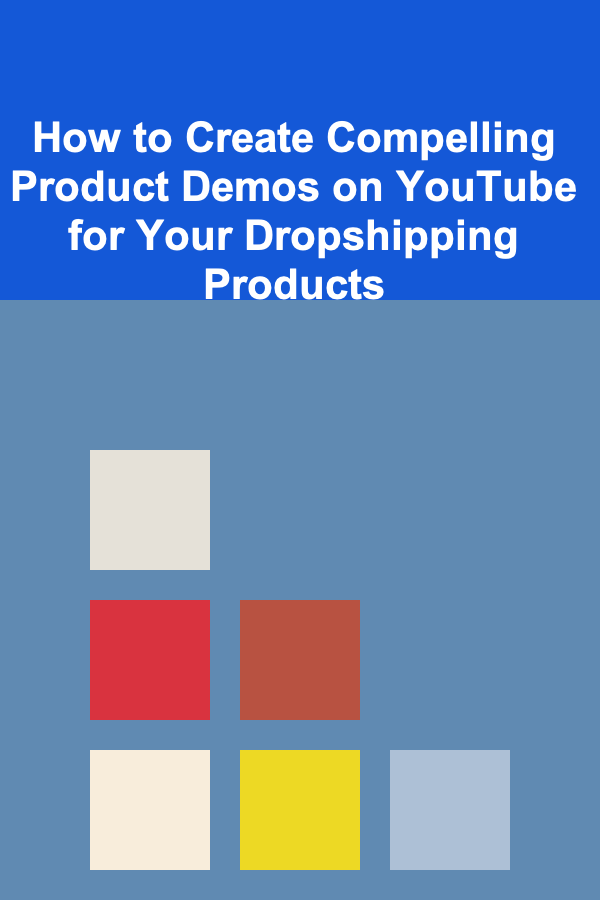
How to Choose the Right Content Formats for Your Audience: An Actionable Guide
ebook include PDF & Audio bundle (Micro Guide)
$12.99$6.99
Limited Time Offer! Order within the next:

When it comes to creating content, one of the most important decisions you can make is choosing the right content format. Content formats, such as blog posts, videos, podcasts, infographics, and social media posts, serve different purposes and appeal to different types of audiences. To ensure your content resonates and achieves its goals, you need to select the right format based on your audience's preferences, behaviors, and needs.
This actionable guide will walk you through a step-by-step process to help you choose the ideal content formats for your audience. We'll dive into understanding your audience, evaluating content formats, aligning content with goals, and optimizing for engagement.
Understand Your Audience: The Foundation of Content Strategy
Choosing the right content format starts with understanding who your audience is. This foundational step helps you ensure that the content you create resonates with your target demographic. Without understanding your audience's preferences, habits, and pain points, it's impossible to choose the right format effectively.
A. Define Your Audience Personas
Audience personas are semi-fictional representations of your ideal customers or audience members. They help you understand your audience's demographics, psychographics, preferences, and behaviors. These personas are essential for choosing content formats that will engage them effectively.
- Demographics: Age, gender, location, education level, income, job role, etc.
- Psychographics: Values, interests, lifestyle, motivations, and pain points.
- Content Consumption Preferences: What type of content do they consume? Do they prefer reading, watching, listening, or interacting with interactive content?
You can develop personas by using data from your website analytics, social media insights, customer surveys, and interviews.
B. Understand Their Preferred Platforms and Channels
Where does your audience spend most of their time online? Are they scrolling through Instagram, engaging with video content on YouTube, or reading long-form articles on Medium? Understanding their preferred platforms can significantly influence your content format choice.
- Social Media: Instagram, Facebook, LinkedIn, Twitter, Pinterest, TikTok
- Search Engines: Google, YouTube, and other search platforms
- Email: Newsletters or promotional emails
- Communities and Forums: Reddit, Quora, or industry-specific forums
By understanding where your audience interacts with content, you can focus your efforts on the platforms they frequent most, allowing you to create the right type of content for each.
Evaluate Content Formats and Their Benefits
Content formats come in many shapes and sizes. They each have unique benefits and drawbacks, which should be evaluated based on your audience's needs and preferences.
A. Blog Posts
Best for: Educating your audience, improving SEO, establishing authority, and engaging readers with in-depth information.
Blog posts are one of the most common content formats. They can range from short posts to long-form content, such as guides or case studies.
-
Advantages:
- Great for SEO (search engine optimization).
- Provides detailed, informative content that can be referenced over time.
- Can be easily shared across social media or other platforms.
- Allows you to build authority in your industry.
-
Challenges:
- Requires strong writing skills.
- Needs consistent production to build a following.
- Less engaging for audiences who prefer visual or auditory content.
B. Video Content
Best for: Engaging audiences visually, demonstrating products or services, telling stories, and reaching mobile users.
Video is highly engaging and can convey complex messages quickly. With platforms like YouTube, TikTok, and Instagram, video content is a powerful tool for reaching a wide audience.
-
Advantages:
- Highly engaging and shareable.
- Ideal for storytelling, tutorials, and demonstrations.
- Often favored by younger audiences.
- Great for building trust through a personal, human connection (e.g., YouTube influencers).
-
Challenges:
- Can be resource-intensive to produce (requires equipment, editing, etc.).
- Needs significant attention to pacing and visual quality.
- Might not be ideal for every industry (e.g., industries that rely more on technical written content).
C. Podcasts
Best for: People who enjoy consuming content while multitasking or on the go (e.g., during commutes or workouts).
Podcasting is an increasingly popular medium that allows audiences to engage with content through audio. Podcasts are great for in-depth interviews, discussions, and storytelling.
-
Advantages:
- Audience can consume content while performing other tasks (listening is hands-free).
- Builds a personal connection with listeners (especially with regular episodes).
- Can cater to niche audiences by focusing on specific topics.
-
Challenges:
- Producing high-quality podcasts requires equipment and technical knowledge.
- May not be suitable for all industries or topics.
- Can be challenging to gain an audience without an existing following.
D. Infographics
Best for: Visual learners, simplifying complex data, or presenting statistics and trends in a digestible format.
Infographics condense large amounts of information into easy-to-understand visual formats, making them shareable and engaging.
-
Advantages:
- Visually engaging and easy to share.
- Can present complex data in an easily digestible way.
- Useful for breaking down statistics, facts, or trends.
-
Challenges:
- Requires graphic design expertise.
- May not be suitable for all types of content (e.g., highly detailed or long-form content).
- Limited ability to convey depth in comparison to written content.
E. Social Media Posts
Best for: Quick updates, engaging with your audience in real-time, and building brand awareness.
Social media is ideal for short-form content, engaging directly with your audience, and building a sense of community.
-
Advantages:
- Quick and easy to create.
- Helps build brand awareness and community engagement.
- Great for reaching younger, tech-savvy audiences.
-
Challenges:
- Content lifespan is often short (especially on platforms like Twitter).
- May not provide in-depth information.
- Can be difficult to measure the true impact (e.g., awareness vs. conversions).
F. Webinars & Live Streams
Best for: Real-time interaction with your audience, answering questions, and providing a live, personal touch.
Webinars and live streaming offer opportunities to engage with your audience in real-time. These formats are great for product demonstrations, training, Q&A sessions, and thought leadership.
-
Advantages:
- Real-time interaction increases engagement.
- Great for establishing authority and trust.
- Offers opportunities for direct feedback and questions.
-
Challenges:
- Requires technical preparation and stable internet connection.
- Must be well-promoted in advance to attract attendees.
- Difficult to scale for large audiences without proper tools.
Align Content Formats with Your Goals
Now that you have a better understanding of content formats, it's essential to align the formats with your content goals. Consider what you're trying to achieve with your content---are you aiming for brand awareness, lead generation, customer education, or thought leadership?
- Brand Awareness: Video, social media posts, and infographics work well for building awareness. They are visual, shareable, and easy to digest.
- Lead Generation: Blog posts, webinars, and gated content (like ebooks or whitepapers) are effective for capturing leads. These formats allow you to offer more value and encourage conversions.
- Customer Education: Webinars, podcasts, and blog posts are excellent for educating your audience. They offer in-depth insights, answer questions, and solve problems.
- Thought Leadership: Long-form blog posts, podcasts, and webinars can position you as an expert in your industry.
Optimize for Engagement
Once you've selected the right content formats, it's crucial to optimize for engagement. Regardless of the format, your content should always provide value, be easy to consume, and resonate with your audience.
A. Focus on Quality
Quality matters more than quantity. Whether you're creating a video, a blog post, or an infographic, ensure your content is high-quality, engaging, and relevant to your audience's interests.
B. Measure and Adjust
Tracking your content's performance through analytics tools (such as Google Analytics, social media insights, or email marketing platforms) will allow you to understand which formats resonate best with your audience. Use this data to adjust your strategy and optimize future content.
- Key Metrics to Track: Engagement rates, time spent on page, social shares, bounce rates, click-through rates, and conversions.
C. Experiment and Iterate
Don't be afraid to experiment with new content formats and refine your approach. You might find that a combination of formats (e.g., blog posts + videos or podcasts + infographics) works best for your audience.
Conclusion
Choosing the right content formats is crucial for reaching your target audience effectively. By understanding your audience, evaluating different content formats, aligning formats with your goals, and continuously optimizing for engagement, you'll create content that resonates and drives results. Stay flexible, measure your success, and adapt your strategy as needed to ensure ongoing content success.

How to Create Compelling Product Demos on YouTube for Your Dropshipping Products
Read More
How to Declutter and Clean Your Home in One Day
Read More
Ways to Monetize Your Deep Learning Skills and Knowledge
Read More
How to Build a Customer Loyalty Program
Read More
How to Travel with Pets on Trains: Rules and Regulations
Read More
How to Fundraise for Specialized Animal Rescue Needs
Read MoreOther Products

How to Create Compelling Product Demos on YouTube for Your Dropshipping Products
Read More
How to Declutter and Clean Your Home in One Day
Read More
Ways to Monetize Your Deep Learning Skills and Knowledge
Read More
How to Build a Customer Loyalty Program
Read More
How to Travel with Pets on Trains: Rules and Regulations
Read More